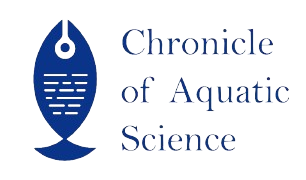| File | Action |
|---|---|
| Viral Vector Technologies Transforming Global Aquaculture Practices | Download |
- 919088951040 call us
- chronicleofaquaticscience@gmail.com Mail us
CoASV3IS104
Viral Vector Technologies Transforming Global Aquaculture Practices
Shawna Yadav and Santhiyagu Prakash*
Abstract
Aquaculture, the cultivation of fish, crustaceans, mollusks, and aquatic plants, is essential for global food security and economic growth, yet it faces persistent challenges in disease management, growth optimization, and immune enhancement. Traditional methods often fall short, driving the need for innovative solutions. Viral vectors, originally developed in molecular biology, are emerging as transformative tools in aquaculture, offering the ability to deliver beneficial genes into aquatic organisms to address these challenges. By enabling precise genetic modifications, viral vectors provide targeted solutions for combating diseases, promoting faster growth, and strengthening immunity in farmed species. This innovation not only improves health and productivity but also aligns with the industry’s push towards sustainability and efficiency. However, integrating viral vector technology into aquaculture involves navigating technical and regulatory hurdles. Despite these challenges, their potential to revolutionize the field is undeniable, offering a promising approach to ensure the industry’s long-term viability while meeting the rising global demand for sustainable seafood.
Keywords
Viral vectors, Aquaculture innovation, Sustainable aquaculture, Genetic technologies, Disease management
Reference
Adams, A., and Thompson, K.D. (2011). Development of vaccines for aquaculture: opportunities and challenges. Fish and Shellfish Immunology. 30(4-5), 868-876.
Alkhalil, A., and Sleiman, R.J. (2020). Viral vector delivery systems: Advancements in non-immunogenic platforms. Gene Therapy and Regulation. 29(2), 45-60.
Bondad-Reantaso, M.G., et al., (2005). Disease and health management in asian aquaculture. Veterinary Parasitology. 132(3-4), 249-272.
Brudeseth, B.E., Skall, H.F., Evensen, O., Von Siebenthal, B., Breck, O., and Olesen, N.J. (2013). Status and future perspectives of vaccines for fish. Vaccine. 31(15), 2992-3001.
Cabello, F.C. (2006). Heavy use of prophylactic antibiotics in aquaculture: a growing problem for human and animal health and for the environment. Environmental
Microbiology. 8(7), 1137-1144.
Chinchar, V.G., Yu, K.H., and Jancovich, J.K. (2011). The molecular biology of frog virus 3 and other iridoviruses infecting coldblooded vertebrates. Viruses. 3(10), 1959-1985.
Elisabetta, T., Salvador, A., and Zitti, M. (2018). Viral vectormediated gene transfer in aquaculture: Emerging applications and challenges. Aquaculture Research. 49(5),
1748–1764.
FAO. (2021). The State of World Fisheries and Aquaculture 2021: Sustainability in Action. Rome: Food and Agriculture Organization of the United Nations.
Kay, M.A., Glorioso, J.C., and Naldini, L. (2001). Viral vectors for gene therapy: The art of turning infectious agents into vehicles of therapeutics. Nature Medicine. 7(1), 33-40.
Lilley, J.H., Kenward, M.A., and Callinan, R.B. (2017). Antimicrobial resistance in aquaculture: An emerging issue. Reviews in Aquatic Animal Health. 29(3), 223-232.
Nayerossadat, N., Maedeh, T., and Ali, P.A. (2012). Viral and nonviral delivery systems for gene delivery. Advanced Biomedical Research. 1(1), 27.
OIE (World Organisation for Animal Health). (2019). Aquatic Animal Health Code. Retrieved from OIE website.
Santiago, T.C., Campos, W. L., and Eusebio, P.S. (2020). Advances in the use of viral vectors for gene therapy in aquaculture. Fish & Shellfish Immunology, 98, 908-918.
Subasinghe, R.P., Shariff, M., and Arthur, J.R. (2001). Health management in Asian aquaculture. FAO Fisheries Technical Paper. 406, 61-72.
Alkhalil, A., and Sleiman, R.J. (2020). Viral vector delivery systems: Advancements in non-immunogenic platforms. Gene Therapy and Regulation. 29(2), 45-60.
Bondad-Reantaso, M.G., et al., (2005). Disease and health management in asian aquaculture. Veterinary Parasitology. 132(3-4), 249-272.
Brudeseth, B.E., Skall, H.F., Evensen, O., Von Siebenthal, B., Breck, O., and Olesen, N.J. (2013). Status and future perspectives of vaccines for fish. Vaccine. 31(15), 2992-3001.
Cabello, F.C. (2006). Heavy use of prophylactic antibiotics in aquaculture: a growing problem for human and animal health and for the environment. Environmental
Microbiology. 8(7), 1137-1144.
Chinchar, V.G., Yu, K.H., and Jancovich, J.K. (2011). The molecular biology of frog virus 3 and other iridoviruses infecting coldblooded vertebrates. Viruses. 3(10), 1959-1985.
Elisabetta, T., Salvador, A., and Zitti, M. (2018). Viral vectormediated gene transfer in aquaculture: Emerging applications and challenges. Aquaculture Research. 49(5),
1748–1764.
FAO. (2021). The State of World Fisheries and Aquaculture 2021: Sustainability in Action. Rome: Food and Agriculture Organization of the United Nations.
Kay, M.A., Glorioso, J.C., and Naldini, L. (2001). Viral vectors for gene therapy: The art of turning infectious agents into vehicles of therapeutics. Nature Medicine. 7(1), 33-40.
Lilley, J.H., Kenward, M.A., and Callinan, R.B. (2017). Antimicrobial resistance in aquaculture: An emerging issue. Reviews in Aquatic Animal Health. 29(3), 223-232.
Nayerossadat, N., Maedeh, T., and Ali, P.A. (2012). Viral and nonviral delivery systems for gene delivery. Advanced Biomedical Research. 1(1), 27.
OIE (World Organisation for Animal Health). (2019). Aquatic Animal Health Code. Retrieved from OIE website.
Santiago, T.C., Campos, W. L., and Eusebio, P.S. (2020). Advances in the use of viral vectors for gene therapy in aquaculture. Fish & Shellfish Immunology, 98, 908-918.
Subasinghe, R.P., Shariff, M., and Arthur, J.R. (2001). Health management in Asian aquaculture. FAO Fisheries Technical Paper. 406, 61-72.
- Published online
- 15th March, 2025
How to Cite the Article
Yadav S and Prakash S. Viral Vector Technologies Transforming Global Aquaculture Practices. Chron Aquat Sci. 2025; 3(1):15-18
Copyright
This is an open-access article distributed under the terms of the Creative Commons Attribution License (CC BY). The use, distribution or reproduction in other forums is permitted, provided the original author(s) and the copyright owner(s) are credited and that the original publication in this journal is cited, in accordance with accepted academic practice. No use, distribution or reproduction is permitted which does not comply with these terms.

CoASV3IS104


